So, we are two weeks into the Trump administration, and we see a runaway rush to promote economic suicide through pandering to oil and coal companies. Because, it would seem, the slogan was really “Make America Great At Propping Up Dead End Industries Again”, but #MAGAPUDEIA” had to be edited down, both for length and …
Tag: Living Energy Independence
Aug 31 2015
Sunday Train: Can Nuclear and Renewable Energy Be Friends?
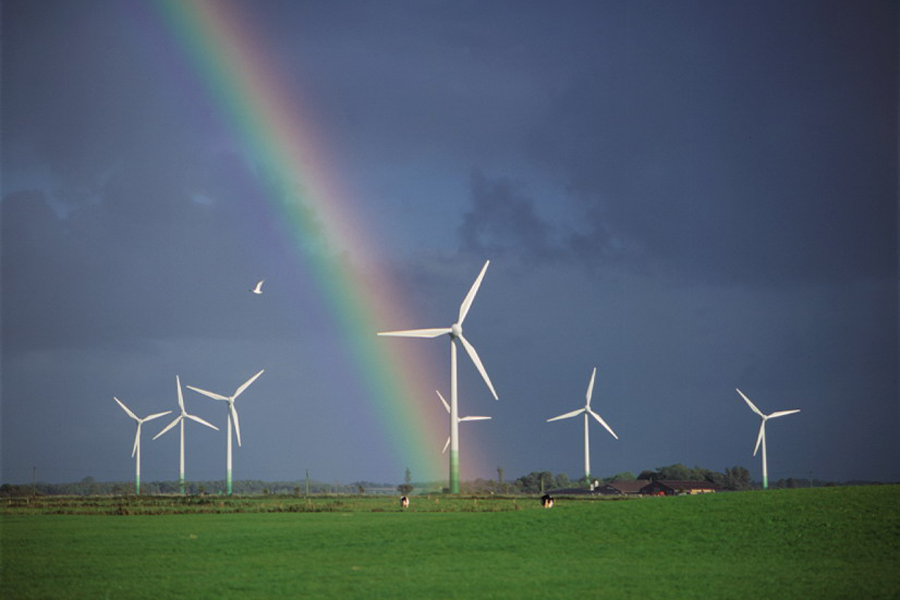 There is an ongoing general discussion in the field of sustainable energy that does not carry the risk of the destruction of our current industrial society and economy about variable renewable energy.
There is an ongoing general discussion in the field of sustainable energy that does not carry the risk of the destruction of our current industrial society and economy about variable renewable energy.
Renewable energy includes a range of low or no carbon sources of energy – but not all renewable energy is sustainable, and not all is low or no carbon. And not all low or no carbon energy sources are from renewable energy resources.
Among the sustainable, no/low carbon renewable energy resources, the most abundant involve the harvest of variable renewable energy, with windpower and solar PV being the most notable. So one obvious strategy for a no-carbon-emitting energy system is to base it on collecting as much of these affordable variable renewables as practicable, and then use other no/low carbon sources to fill in the gaps.
However, in some quarters, this elicits a counter-argument. The most “successfully de-carbonized” economies of the world today are either those with a very high reliance on reservoir hydropower … which while very useful in the United States offers nowhere near a large enough economic resource to meet any large fraction of our current consumption … or those with a very high reliance on nuclear power.
Indeed, near the beginning of this month, Stephen Lacy briefly reported on a report from the Breakthrough Institute that raised an alarm that the new Clean Power Plan may in fact oversee a net increase in GHG emissions. The final plan does not include measures to avoid the decommissioning of substantial numbers of nuclear power plants. And the numbers are stark:
- The 30 nuclear plants at risk by 2030 avoid over 100 MMT of CO2 emissions
- New non-hydropower renewables are expected to avoid 60 MMT of CO2 emissions by 2030
- New nuclear plants under construction are expected to avoid under 30 MMT of CO2 by 2030
So where retention of those 30 nuclear power plants would find us over 80 MMT of avoided CO2 ahead, and in a position to accelerate that in the following decade … their closure could leave us over 10 MMT below where we are now.
May 26 2015
Sunday Train: In Worrying News, Non-Petroleum in Transport Hits 60-year High
 The US Energy Information Administration released a story last week which sounded like good news: Nonpetroleum Share of Transportation Energy at Highest Level Since 1954. “Since 1954” means, since before I was born or, as hard as it is to wrap my brain around, a period spanning six decades.
The US Energy Information Administration released a story last week which sounded like good news: Nonpetroleum Share of Transportation Energy at Highest Level Since 1954. “Since 1954” means, since before I was born or, as hard as it is to wrap my brain around, a period spanning six decades.
So, surely this is good news? Well, if you have glanced at their accompanying chart, no, not so much. A more descriptive headline would be, “US transport continues to be addicted to petroleum as its primary energy source”. And digging into the US EIA numbers reveals that the situation is even more grave than the chart to the right would make you think.
Apr 27 2015
Sunday Train: Variable Renewables and Dispatchable Demand
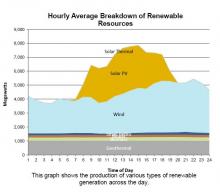
But the efficiency gains of electric traction are only half of the story for sustainable transport, since its not fully sustainable unless that electricity is generated in a sustainable way.
And when following online discussion of renewable energy at the Energy Collective, which attracts both advocates for and detractors of investment in renewable energy resources, a perennial source of ammunition for attacks on renewable energy are the challenges of meeting demand for electricity with the harvest of a variable source of energy that is available on its own schedule, and not ours.
This is a topic I have touched on before (cf , ), Inspired by the article at the Energy Collective: Will Natural Gas Peaker Plants Become Obsolete?, I am coming back to today. What I want to focus on today is the opportunities offered by dispatchable demand for better integration of variable renewable energy. And I would be happy if you would join me to discuss this topic (or any other topic involving sustainable transport), below the fold.
Aug 11 2014
Sunday Train: The Era of Reverse Pumped Hydro
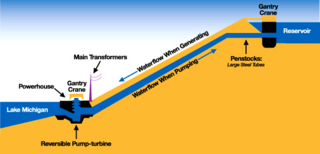 In a sense, Sunday Train has been mentioning reverse pumped hydro before the Sunday Train actually existed. In 2007 at Daily Kos, in “Driving Ohio on Lake Erie” (reprinted in 2012 at Burning the Midnight Oil), reverse pumped hydro was mentioned as one technology for smoothing the variability of Lake Erie offshore wind. In 2008 on Docudharma, talking about what we could do if we pursued serious goals, as opposed to “predicting” what “they” are “likely to do”, I mentioned it again. I mention it again in The Myth of Baseload Power. And it features in the description of where Biocoal would fit into among dispatchable renewable energy in Unleashing the Political Power of Biocoal.
In a sense, Sunday Train has been mentioning reverse pumped hydro before the Sunday Train actually existed. In 2007 at Daily Kos, in “Driving Ohio on Lake Erie” (reprinted in 2012 at Burning the Midnight Oil), reverse pumped hydro was mentioned as one technology for smoothing the variability of Lake Erie offshore wind. In 2008 on Docudharma, talking about what we could do if we pursued serious goals, as opposed to “predicting” what “they” are “likely to do”, I mentioned it again. I mention it again in The Myth of Baseload Power. And it features in the description of where Biocoal would fit into among dispatchable renewable energy in Unleashing the Political Power of Biocoal.
But one thing that Sunday Train has not done is to give a closer look at the current state of play of reverse pumped hydro in the United State, what are the regulatory obstacles that stand in the way of greater development of reverse pumped hydro, and what can be done to sidestep or overcome those regulatory obstacles. Evidently, I must have been saving all of that for today, for placement below the fold.
Jul 21 2014
Sunday Train: What Future for America’s Deadly Cul-de-Sacs?
 The Great Recession of 2007-2009 triggered the Depression that we appear to be exiting this summer. And it was triggered by the collapse of the Great Turn of the Century Suburban Housing Bubble.
The Great Recession of 2007-2009 triggered the Depression that we appear to be exiting this summer. And it was triggered by the collapse of the Great Turn of the Century Suburban Housing Bubble.
In coming out of the recent Depression, one driver of residential property values, the Cul de Sac, seems to be in conflict with a new driver: walkability. In October 2013, the Realtor(R) Magazine Online, of the National Association of Realtors, wrote, in Neighborhoods: More Walkable, More Desirable that:
Neighborhoods that boast greater walkability tend to have higher resale values in both residential and commercial properties, finds a recent study published in Real Estate Economics. In fact, a 2009 report by CEOs for Cities found that just a one-point increase in a city’s walk score could potentially increase homes’ values by $700 to $3,000.
And Ken Harney, writing for NewHomeSource.com, observes in that:
The core concept – connecting people with where they want to work, play and own a home by creating attractive neighborhood environments that make maximum use of existing transit infrastructure – fits many post-recession households’ needs, regardless of age. Older owners of suburban homes are downsizing into townhouses and condo units close to or in the central city, often in locations near transit lines. Younger buyers, fed up with long commutes to work, want to move to places where they can jump onto mass transit and get off the road.
Many of these buyers also have an eye on economics. For example, Bill Locke, a federal contracts consultant in northern Virginia, said that although owning a LEED-certified townhome near a Metro transit stop “is a really big deal” for himself and his wife, he sees the unit they recently purchased in the Old Town Commons development in Alexandria, Va., as a long-term investment that will grow in value “because it makes so much more sense” than competing, traditional subdivisions farther out from the city.
So, what does this mean for the sustainable transport and for the future of the deadly American Suburban Cul de Sac? Let’s have a chat about it, below the fold.
Jun 30 2014
Sunday Train: Is There A Beam of Hope for Texas Rooftop Solar?
 A few weeks back, I teased that I wanted to take a bit of a look at Texas Rooftop Solar in the Sunday Train (which is, recall, focused on Sustainable Transport & Energy, and so both not just about trains, and also not in favor of trains when the trains are advancing climate suicide) … and then the California budget passed and I went on a two week binge on California HSR.
A few weeks back, I teased that I wanted to take a bit of a look at Texas Rooftop Solar in the Sunday Train (which is, recall, focused on Sustainable Transport & Energy, and so both not just about trains, and also not in favor of trains when the trains are advancing climate suicide) … and then the California budget passed and I went on a two week binge on California HSR.
But now its time to take that glance over at Texas Rooftop Solar. After all, you’d think that Texas would be an ideal state for rooftop solar, and for years we’ve been seeing articles about how Lone Star State Rooftop Solar would hit big “real soon now”. For instance, this, from 13 Jan, 2013: Solar Power Could See Explosive Growth in Texas over Coming Decades:
Still, solar is just a tiny sliver-less than 1 percent-of Texas’ electricity mix, which is dominated by coal (34 percent) and natural gas (45 percent). Wind, with a 9 percent share, is a giant compared to solar.
Yet, the economics are becoming increasingly favorable for solar to take off in a big way. The question is probably when, not if. And a recent analysis by ERCOT-the industry-funded, technocratic grid operator-has some very rosy projections for the future of the solar industry in Texas. (And some very sour news for nuclear, coal and maybe even natural gas.)
The analysis, first flagged by Colin Meehan of Environmental Defense Fund of Texas, looks at potential transmission needs in the next two decades. But, as Meehan wrote, ERCOT “found that if you use updated wind and solar power characteristics like cost and actual output to reflect real world conditions… wind and solar are more competitive than natural gas over the next 20 years.”
But if the future doesn’t start arriving, it might never get here, brought crashing down by the catastrophic impact of runaway climate crisis. So, what are the prospects that rooftop solar might really start hitting its stride really soon now?
Jun 09 2014
Sunday Train: The Solar Fight, Is Going Right, Deep in the Heart of Texas …
 Well, what do you know? I look around, and see a story saying Solar power gains momentum after long struggle in Texas. And not in “Grist” or “Solar Energy News!” or any such … but in the Dallas Morning News Business section from Wed, 4 June 2014.
Well, what do you know? I look around, and see a story saying Solar power gains momentum after long struggle in Texas. And not in “Grist” or “Solar Energy News!” or any such … but in the Dallas Morning News Business section from Wed, 4 June 2014.
According to the story,
Recurrent announced plans last month to build a 150-megawatt solar farm in West Texas after signing a 20-year power purchase deal with Austin Energy. That comes just months after First Solar, one of the world’s largest solar companies, began construction on a 22-megawatt farm near Fort Stockton with plans of eventually expanding to 150 megawatts.
…
And an even more dramatic acceleration could be ahead. Solar developers have been flooding the state’s grid operators with applications for more solar farms, close to 2,000 megawatts worth, said Warren Lasher, director of system planning for the Electric Reliability Council of Texas. “It’s hard to say how much will actually get built,” he said. “It’s been this way for more than a year. But it’s a significant increase from before.”
Join me for utility scale solar PV, utility scale solar thermal, onshore wind, offshore wind, and grid integration … below the fold.
May 06 2014
Sunday Train: Freight Transport and the Highway Funding Crisis
Belated edition ~ technical difficulties interfered with posting to Soap Blox blogs
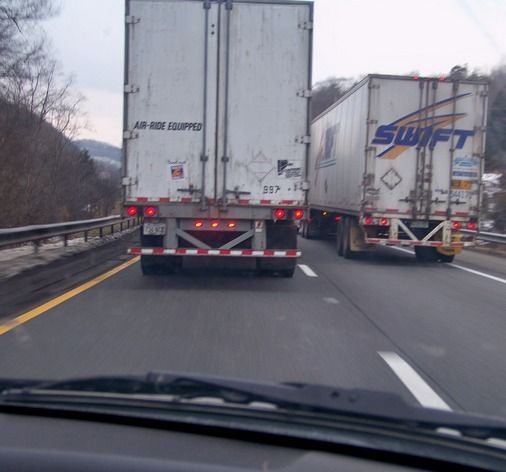 We are going to be hearing increasingly this year about the Highway Funding Crisis. Much of that discussion will be directed toward exploiting the political leverage that our car addiction gives to the Highway Lobby.
We are going to be hearing increasingly this year about the Highway Funding Crisis. Much of that discussion will be directed toward exploiting the political leverage that our car addiction gives to the Highway Lobby.
But there is the other side of the Highway Funding Crisis, which is freight transport. Our freight transport system has been as deliberately addicted to road funding as our passenger transport system, and in the process is quite heavily addicted to diesel fuel.
Now, the Sunday Train has frequently tackled this issue from the side of the physical unsustainability of our dependence on petroleum based fuels for a majority of our transport. However, its also the case that the system of public finance upon which we built our road transport system is becoming more and more financially unsustainable.
Jul 22 2013
Sunday Train: Net Energy Yield and the Steel Interstate Energy Revolution
crossposted from Voices on the Square
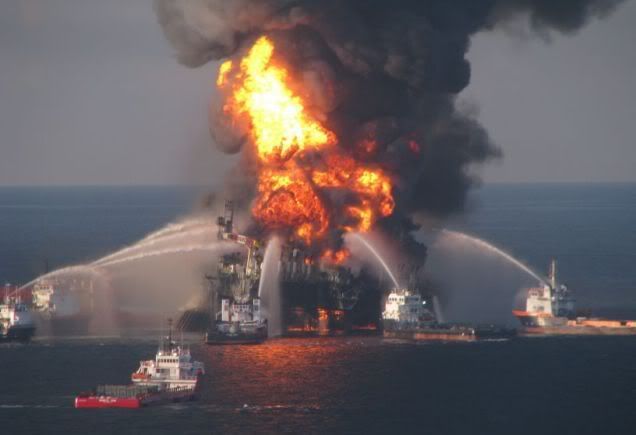 In the online support for the April, 2013 Scientific American article on Energy Return on Investment (EROI), Scientific American online interviewed Charles Hall, developer of the EROI concept, on whether Fossil Fuels will be able to maintain economic growth. In one of his answers, Charles Hall responds to the question:
In the online support for the April, 2013 Scientific American article on Energy Return on Investment (EROI), Scientific American online interviewed Charles Hall, developer of the EROI concept, on whether Fossil Fuels will be able to maintain economic growth. In one of his answers, Charles Hall responds to the question:
What happens when the EROI gets too low? What’s achievable at different EROIs?
He says:
If you’ve got an EROI of 1.1:1, you can pump the oil out of the ground and look at it. If you’ve got 1.2:1, you can refine it and look at it. At 1.3:1, you can move it to where you want it and look at it. We looked at the minimum EROI you need to drive a truck, and you need at least 3:1 at the wellhead. Now, if you want to put anything in the truck, like grain, you need to have an EROI of 5:1. And that includes the depreciation for the truck. But if you want to include the depreciation for the truck driver and the oil worker and the farmer, then you’ve got to support the families. And then you need an EROI of 7:1. And if you want education, you need 8:1 or 9:1. And if you want health care, you need 10:1 or 11:1.
Civilization requires a substantial energy return on investment. You can’t do it on some kind of crummy fuel like corn-based ethanol [with an EROI of around 1:1].
A big problem we have facing the alternatives is they’re all so low EROI. We’d all like to go toward renewable fuels, but it’s not going to be easy at all. And it may be impossible. We may not be able to sustain our civilization on these alternative fuels. I hope we can, but we’ve got to deal with it realistically.

Recent Comments